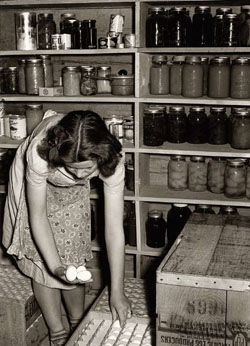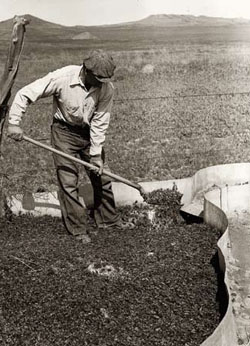Montana: Stories of the Land
Companion Website and Online Teacher's Guide
Chapter 18 - The Great Depression Transforms Montana, 1929-1941
Chapter 1 - Montana: Where the Land Writes History
Chapter 2 - People of the Dog Days
Chapter 3 - From Dog Days to Horse Warriors
Chapter 4 - Newcomers Explore the Region
Chapter 5 - Beaver, Bison, and Black Robes
Chapter 6 - Montana's Gold and Silver Boom
Chapter 7 - Two Worlds Collide
Chapter 8 - Livestock and the Open Range
Chapter 9 - Railroads Link Montana to the Nation
Chapter 10 - Politics and the Copper Kings
Chapter 11 - The Early Reservation Years
Chapter 12 - Logging in the "High Lonesome"
Chapter 13 - Homesteading This Dry Land
Chapter 14 - Towns Have Lives, Too
Chapter 15 - Progressive Montana
Chapter 16 - Montana and World War I
Chapter 17 - Montanans on the Move
Chapter 18 - The Great Depression Transforms Montana
Chapter 19 - World War II in Montana
Chapter 20 - Building a New Montana
Chapter 21 - A People's Constitution
Chapter 22 - Living in a New Montana
Learning From Historical Documents
Letter from Margaret Loughrin to Governor Frank Cooney, from Butte, 1934. Montana Governors records, 1889-1962. Manuscript Collection 35. [box 72 folder 8]. Montana Historical Society Research Center. Archives. Excerpted in Not In Precious Metals Alone: A Manuscript History of Montana (Helena, 1976): 256-57.
Context for Margaret Loughrin's Letter:
By 1918, disagreements within the union and the state's willingness to support the Anaconda Company by sending the militia to Butte to break strikes had undermined the strength of the miner's union. Low prices and cheaper copper from other Anaconda Company mines caused shutdowns through the mid-1920s. In this period, negotiation and strikes gained nothing for the miners, and troops sometimes forced strikers back to work. Limited recovery in the late 1920s provided increased jobs and wages, but the stock market crash of 1929 sent Butte's economy plummeting again. The Roosevelt Administration's pro-union stance was the one bright spot and, with the backing of federal legislation, the miners organized once more. Butte's local of the Mine, Mill and Smeltermen's Union, with a membership frustrated by twenty years of futility and suffering from the Depression's effects, struck in 1934. The stoppage, involving all mine-mill and craft unions in Butte, Great Falls, and Anaconda, was the most peaceful the industry had experienced since the turn of the century. Company supporters called for troops to halt the strike, but the governor resisted and the strike ended through mediation on September 21, 1934. Four and a half months of solidarity achieved a generally favorable contract. This, combined with increased copper production as a result of military requirements, allowed prosperity and good labor relations to prevail in the Montana copper industry for over a decade.
About Primary Sources:
Letters, diary entries, census records, newspapers, and photographs are all examples of "primary sources," material created at a particular moment in the past that has survived into the present. Primary sources can provide clues to the past. They are our windows into an earlier time. The Montana Historical Society contains thousands of primary sources. In the 1970s, archivists collected just a few snippets into a book, which they called Not in Precious Metals Alone: A Manuscript History of Montana. That book is now on the web in its entirety. The above sample from that book relates directly to this chapter.


